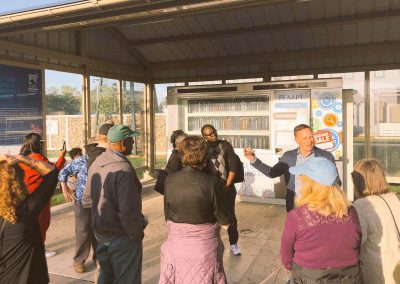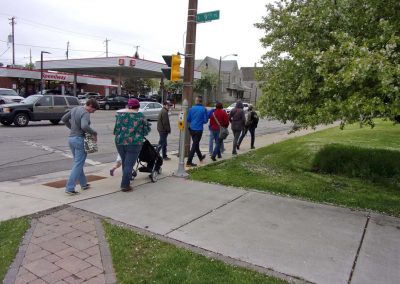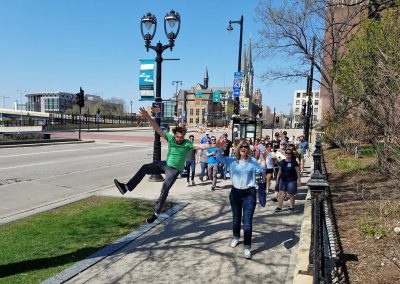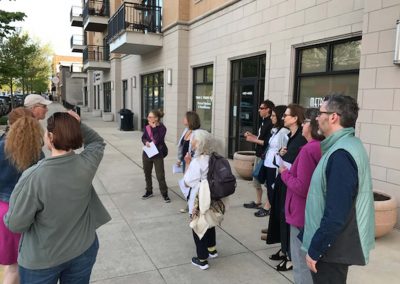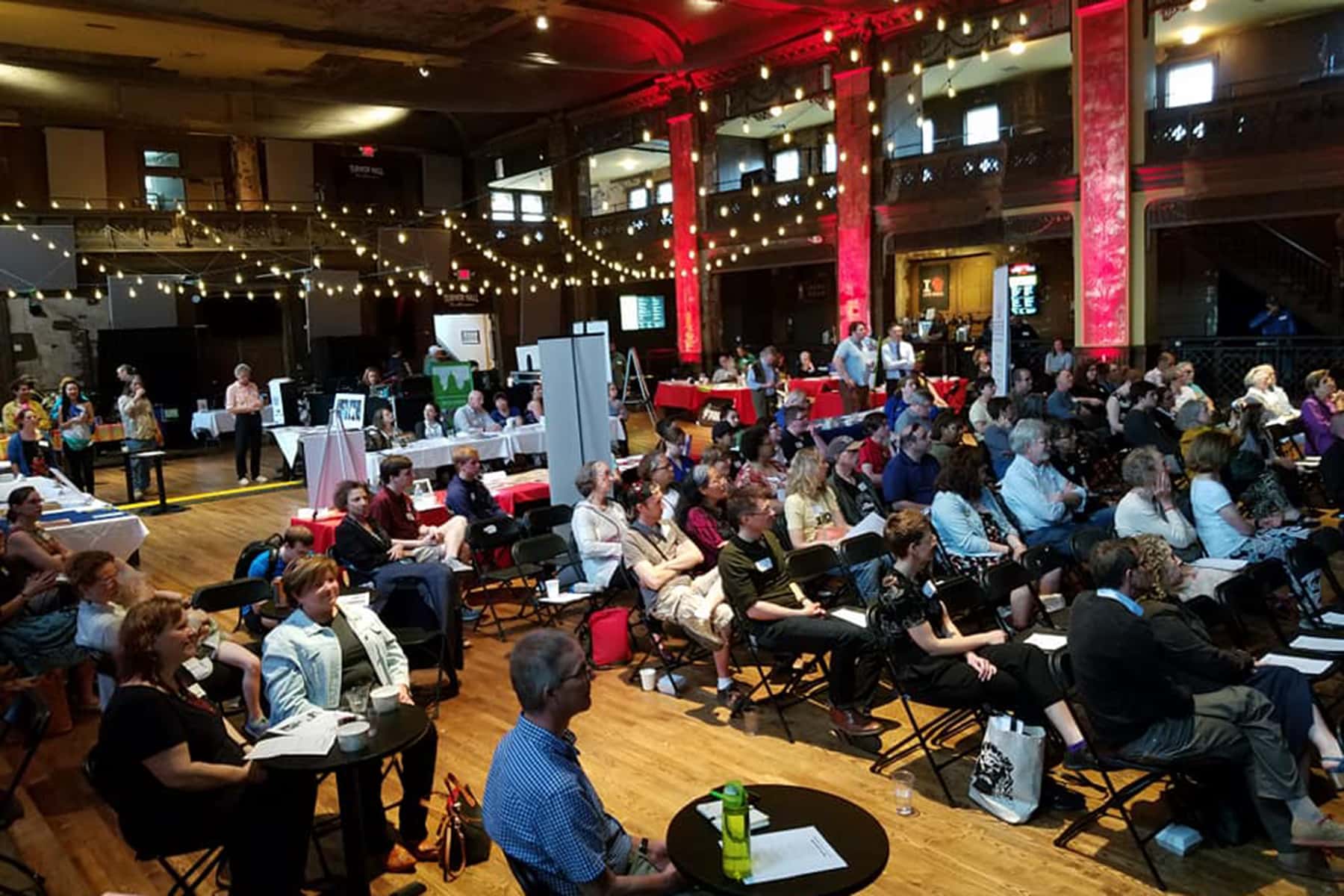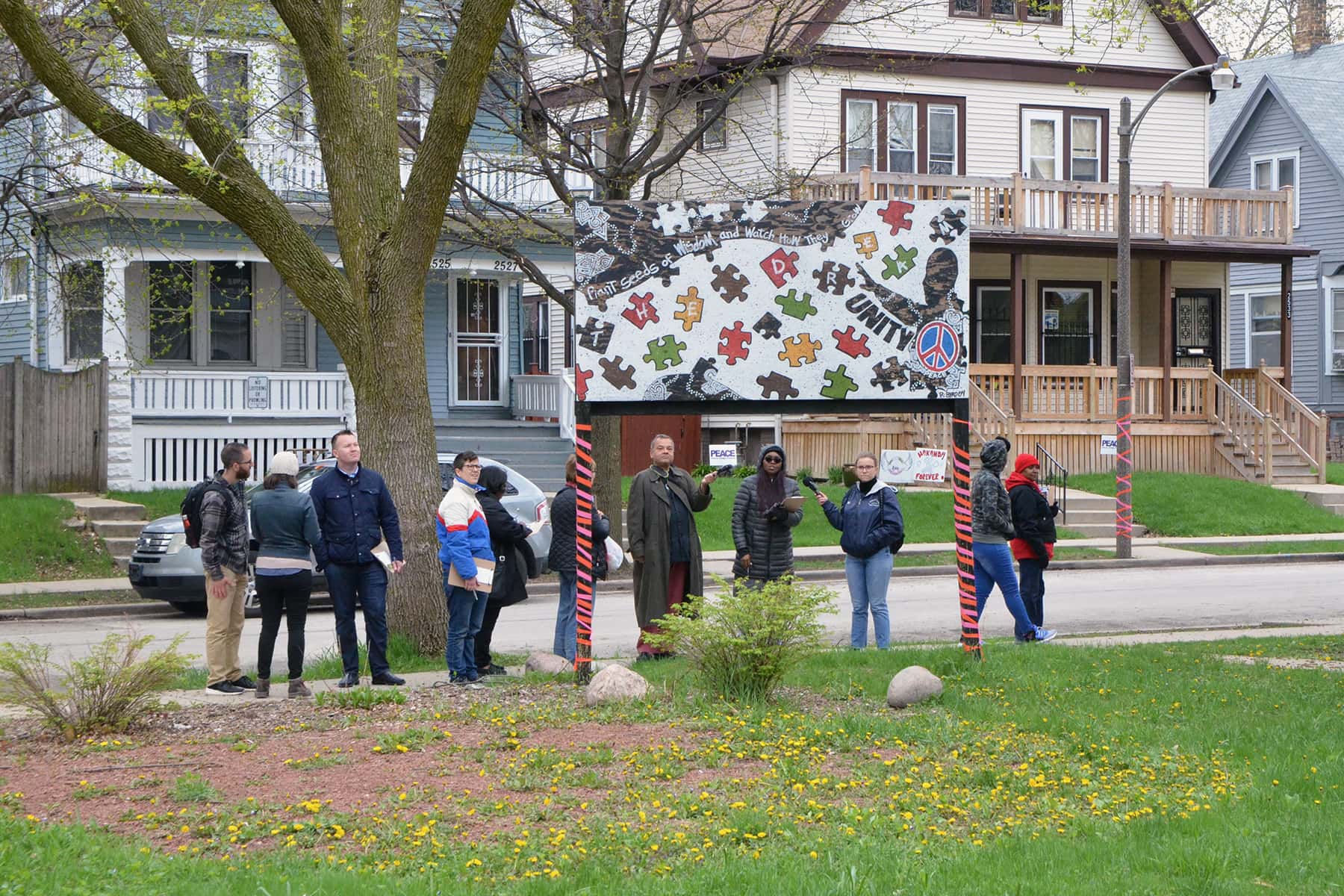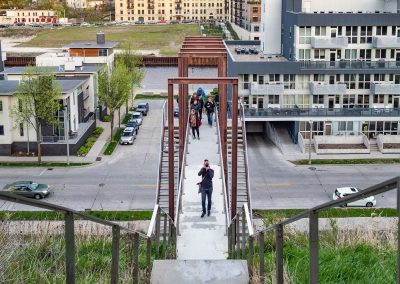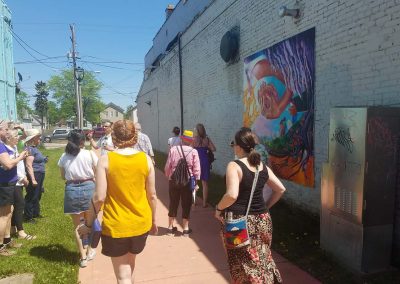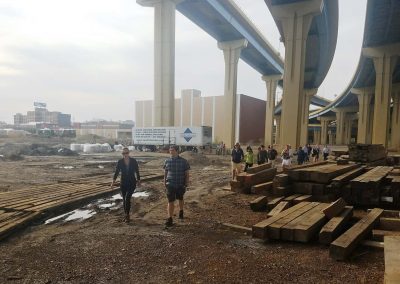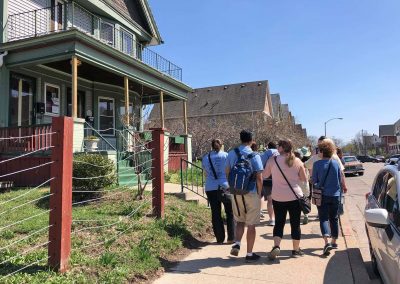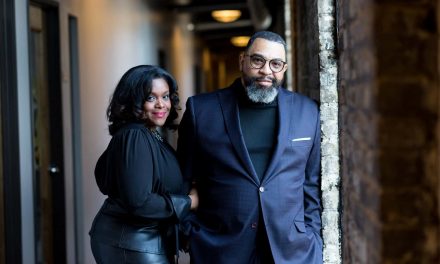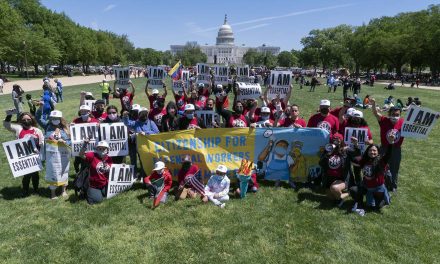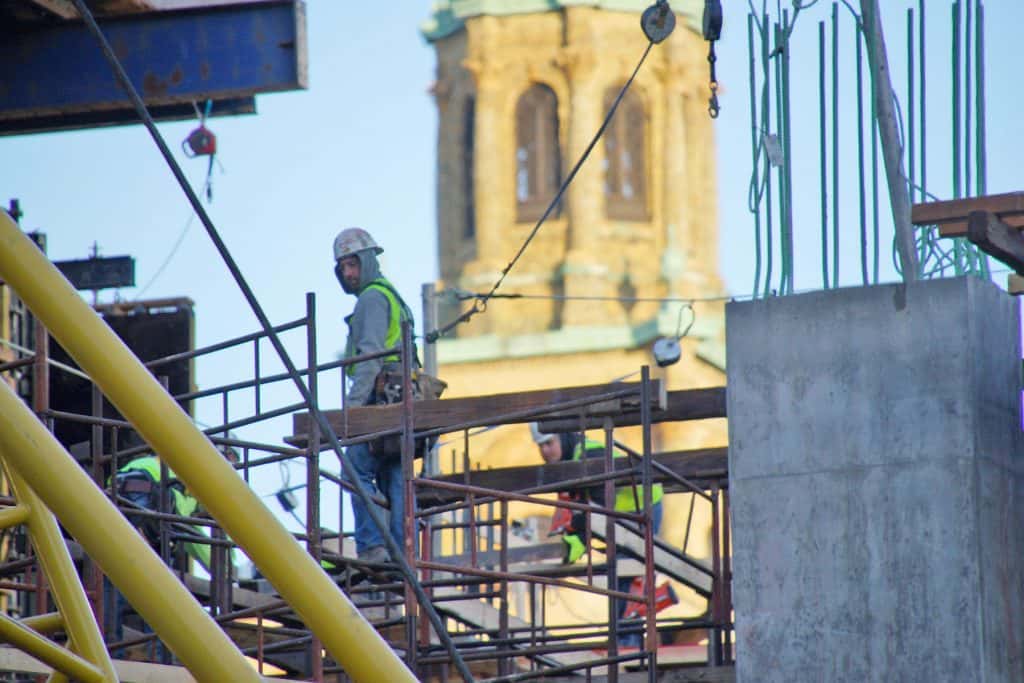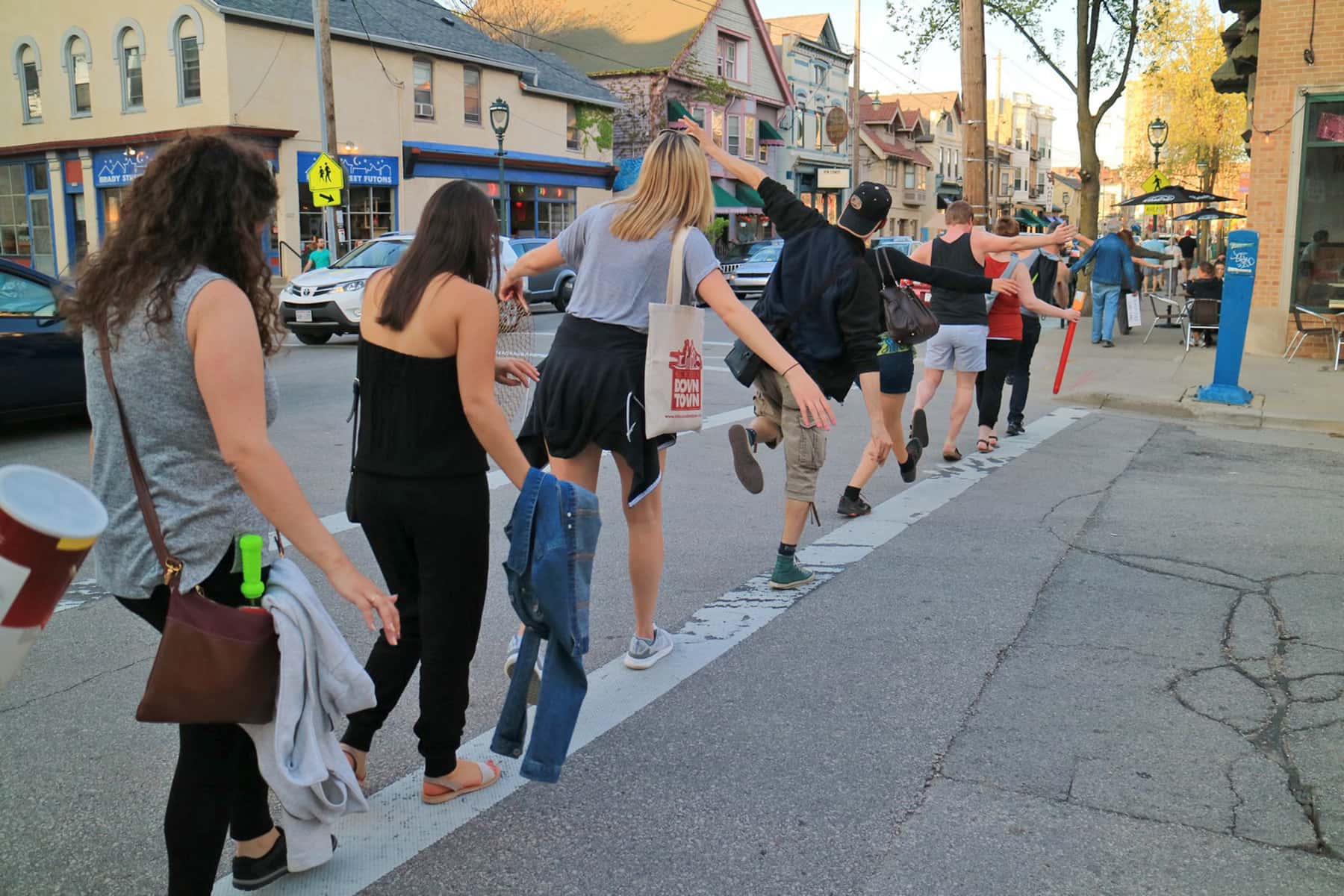
As this year’s city organizer for Jane’s Walk MKE, I can easily get caught up in a frenzy of numbers: How many walk leaders do we have so far? How many neighborhoods are we exploring? How much money are we spending? How many Facebook followers do we have? How many people are signing up? How many community partners… how many promotional posters… how much food to order?
The minutiae can sometimes overshadow the big picture. Therefore, I’ve been focusing on three other numbers as we prepare for our fourth year of hosting the free, resident-led neighborhood explorations throughout the city: 3, 10, and 28.
THIRD PLACES
The first number is 3, as in “third place.”
Ray Oldenburg coined this term in his 1989 The Great Good Place. After home (our “first place”) and work (our “second place”), “third places” are centers of community life where we interact and transact with each other, create society and nurture culture. Third places are sidewalks and plazas, front yards and backyards, schools and libraries, bookshops and theaters, bars and cafes, restaurants and block parties. They are salons and barbershops, malls and farmer’s markets, gyms and parks and even online environments like this one where we go to invest in the lives of others.
It’s interesting to me that Oldenburg used the term “place” instead of “space.” In my mind, I tend to think of place as technical, like a pinpoint on a map that one goes to (e.g., I’m going to your place). Nothing special. I tend to think of space as something special, familiar, created, like a well-designed living room (e.g., Do you like my new space?). The more I’ve read about urban planning, however – and this might be all semantics – those two terms are more often understood differently. Instead, a space is a blank canvas until we make it a place.
Consider that we talk about “placemaking” and not “spacemaking.” Consider, too, the connotation of space as a void waiting to be filled, a stasis devoid of movement or meaning. When the space is filled, when we interact with it, create something out of it, give meaning to it, then it becomes what we could call place. According to humanistic geographer Yi-Fu Tuan, we assign meaning to space through both our direct and intimate experiences with it and our indirect and conceptual creation of symbols, art and story about it. Through these processes, we create places.
Following this line of reasoning, then, today, every time we fill a vacant lot or the side of a building with a playground or art or fill a street with bike lanes and traffic calmers or an empty storefront with a new local business, we are creating third places in Milwaukee that can draw us out of our first and second places and into the life of the city.
Social spaces become places every time we connect positively with each other or our environment, every time one organization collaborates with another, every time we transform from being a stranger in a space to being a familiar face and friend. When I walk into a space for the first time, it doesn’t become a place until I invest something in it: my time, my money, my conversation with someone else. Milwaukee needs vital “third places” for everyone, because, as we well know, there is a lot of “space,” a lot of void, to be filled.
We need more places like Coffee Makes You Black and Gee’s Clippers and the Sherman Phoenix, all of which, coincidentally, created vibrant community places out of vacant (or destroyed) bank spaces. We need more of Black Cat Alley and Tia Richardson and muralists of all kinds to breathe place into spaces in need of beauty and hope. We need more helpful and healing places like those created by Heal the Hood, Program the Parks and Running Rebels, and more activating and activist places like NEWaukee’s, Activate MKE’s and TRUE Skool’s. More places like Alice’s Garden, Teens Grow Greens and We Got This for growing not only food but mindsets and skills.
We need more people protecting our natural places from becoming lifeless spaces, more people advocating for safe and healthy places for walkers, bikers and drivers alike. More park places by HOME GR/OWN, more playground places from MKE Plays. More investment in decimated spaces like the 30th Street Corridor, more people being the voice of the voiceless in the dangerous space of the Milwaukee Secure Detention Facility. More organizers like Bridge the Divide in Cedarburg and One Circle Forward in Shorewood trying to bring their suburban spaces closer to Milwaukee’s spaces to create shared places of collaboration.
I think, too, about those among us who lack even a “first place” or a “second place.” About how we can create first places for them that offer them opportunities for second places and also allow them the freedom to enjoy third places that others take for granted.
Indeed, how can we avoid taking our third places for granted? How can we nurture them, share them with others? Protect them and repair them if necessary?
Jane’s Walk MKE encourages answers to those questions with its mission and call to explore the city and build community connections through not only observation but dialogue and storytelling, not only reimagining but working to change the lingering spaces and the places in need of improvement. Its vision is a Milwaukee that has, as Jane Jacobs said in The Death and Life of Great American Cities, “the capability of providing something for everyone, only because, and only when, [it is] created by everybody.”
A Milwaukee Turners program, JW MKE joins over 200 cities in almost 40 countries every May to celebrate the legacy of urbanist Jane Jacobs, the urbanist and activist who championed the power of the people to build the cities in which they want to live. She had no formal training as an urban planner, relying instead on empirical evidence collected at the ground level. Her methodology, at its core, was simple: “No one can find what will work for our cities by looking at… suburban garden cities, manipulating scale models, or inventing dream cities. You’ve got to get out and walk.” In other words: Discover effective third places by hitting the pavement.
She first gained attention with her 1958 article for Fortune Classic, “Downtown is for People,” which was followed a few years later with her 1961 treatise The Death and Life of Great American Cities, which explored her observations about how cities thrive and fail, advocating what she called “the sidewalk ballet” of dense, multi-use neighborhoods with so many places to interact and transact.
As an activist, she took to the streets to help stop freeway expansion in New York City and later Toronto. I can’t help to think that if she had lived in Milwaukee during the creation of I-43 that she would have lobbied to save Bronzeville from being transformed from a place to a space.
If Jacobs had used the terms first, second, and third places, too, she likely would have seen the beauty in seeing those three kinds of places synthesized into neighborhoods designed to support people as they live, work and play. That’s why every May, people all over the world, and all over Milwaukee, “get out and walk” (or get mobile however they can), set their “eyes on the street” as Jacobs would also urge and explore their cities’ thriving places and those that have potential to become places.
POWER OF 10 (PLACES)
The second number is 10.
The sidewalk ballet that Jacobs wrote about was really about the dance of multiple places intersecting in a community. Perhaps inspired by this idea, Project for Public Spaces – which calls themselves the “central hub of the global placemaking movement,” observes that “cities succeed or fail at the human scale (the placescale) and this scale is often overlooked.”
To prevent such oversight, they developed the concept of The Power of 10+, which suggests that “places thrive when users have a range of reasons (10+) to be there. These might include a place to sit, playgrounds to enjoy, art to touch, music to hear, food to eat, history to experience, and people to meet. Ideally, some of these activities will be unique to that particular place, reflecting the culture and history of the surrounding community.”
Think about the place where I’m finishing this piece: the Sherman Phoenix. Here, there are many places for people to lounge, solo or together; places to eat and drink; places to buy holistic products, a hair styling or designer shoes; places to create art, practice yoga, learn jujitsu. There’s an art gallery, there are game nights, there’s music. The minute I walked in, I connected with dancer Cedric Gardner and we had a great conversation about what we’ve been up to for the past year. Last time it was Venice Williams. Every time I’m there, I have a new interaction. What used to be a burnt out space is now a thriving 10+ place.
This year, then, JW MKE has been inspired by the Power of 10+. To kickoff off the month-long series of explorations, we have planned a Ballroom Block Party at Turner Hall Ballroom on Wednesday, May 1. Turner Hall will be transformed into a mini-neighborhood featuring more than 10 fun opportunities for guests to experience what makes a neighborhood thrive. Guests will enter the “streets” of the ballroom, with “sidewalks” lined with organizations dedicated to making Milwaukee better for all through neighborhood- and community-building efforts.
The Ballroom Block Party promises opportunities to (1) observe, with photos from the 2018 walks and the award-winning photography of ZIP MKE, and (2) listen and dance with DJ Nicole Acosta of No Stress Collective. There will be (3) dozens of chances to learn from community partners’ efforts and (4) connect with them and other guests with special Bingo cards. This year, guests will again enjoy (5) crocks of Jamaican stew and rice from caterer Annie Minga as well mounds of pupusas from Cielito Salvadoreño. Of course, the bar will be open for service.
Every block party needs opportunities for play and laughter, so the popular (6) QuizMaster Trivia will test your Milwaukee smarts; (7) MKE Plays will allow both young and old a chance to see and build through “child’s eyes” with its gigantic blue Tinker Toys; and (8) guests will don Jane Jacobs’ cat-eye glasses and inspirational picket signs for fun photo opportunities in front of our official JW MKE backdrop.
Finally, (9) Safe & Healthy Streets will feature ways residents can get involved in real ways to change the narrative and conditions of our streets; (10) Milwaukee Turners will be signing up new members; and (11) guests will receive a Jane’s Walk MKE Passport to the City so they can log their May walks, bikes and paddles. As added bonuses, the Ballroom Block Party will feature door prizes, plenty of free stickers and JW MKE’s official 2019 t-shirt for sale. The t-shirts will be the only thing that costs anything: the entire event is free.
A PERSONAL GOAL: 28 ZIP CODES, 28 PLACES
Finally, the third number is 28.
Inspired by Jacobs, my work with ZIP MKE, the Power of 10+ and the need for placemaking, I will commit to creating walks in each of the 28 ZIP Codes between May and the end of the year. I plan to walk regardless of who joins me, but I of course hope to be joined by other walkers, as we embark from a predetermined starting point, walk for 28 uncharted minutes (approximately 1-1.5 miles), walk back for another 28 minutes and end with 28 minutes of purposeful reflection (and conversation if others join me) about my/our observations. I plan to record the routes and write briefly about each excursion.
THE 4TH WALL: FROM WALKING TO ACTION
Ok, I can’t help it. In conclusion, I propose one more meaningful number: 4.
While I am pretty sure that “breaking the fourth wall” is not an urban planning or architectural metaphor, I am proposing it as one metaphor for JW MKE. In theater and other media, of course, the fourth wall is the invisible wall that separates actors from the audience. Typically, actors act as if they can’t see through the wall, that the audience doesn’t exist. But when they “break” the conventional wall and address the audience, actors can reveal everything from theatrical asides to their own inner monologues.
If everyone who walks, bikes, or paddles in a Jane’s Walk is merely an actor observing their city from the “stage” of the streets or paths or rivers, casting their gaze onto buildings and people, flora and fauna and casting their voices to the wind to say “What a lovely thing I saw today” or “I’m glad I got out and walked,” with no follow-up action, then the theater of Jane’s Walk will have been not in vain but only a temporary action. What JW MKE encourages participants – and all residents of Milwaukee – to do is to break that fourth wall and realize that they do have an audience.
Walking once, twice, even ten times just in May is not the point. May is simply a model, a jumpstart, for what the rest of the year could look like. JW MKE encourages participants to share their observations and experiences with their neighborhoods, their local elected officials, the organizations, businesses and other community assets who could benefit. And not only to share but act: to revisit those places they trod or cycled or paddled, to patronize those businesses they visited, to support and advocate for improvements where needed.
Yes, JW MKE is about celebrating the legacy of Jane Jacobs during the month of May. But it’s more so about creating new legacies and embodying her vision of what makes cities like Milwaukee thrive – in the 11 other months of the year, too.

